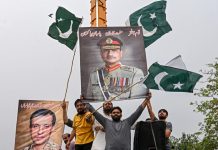The border conflict between India and China have deteriorated ties between Beijing and New Delhi. On June 15, the clash erupted between the troops of two countries that ended in deaths of 20 Indian soldiers and an undeclared number on the Chinese side.
According to several media reports, in the savagery clashes that took place in the freezing temperatures at the India-China border- called the LAC, the troops engaged in a physical fight and some even claimed that both sides had beaten each other to death.
The blows were exchanged through nail-studded clubs and stone-throwing. It was also reported that soldiers might have fallen into the deep valley and the river in Galwan during the brutal clash between soldiers of India and China.
“This month’s clash raises concerns that China may be returning to its thinking and actions of a half-century ago,” wrote Katsuji Nakazawa, a senior writer at Nikkei Asian Review. He further wrote about the “history of awkward birthday incidents” between Indian Prime Minister Narendra Modi and the Chinese President, Xi Jinping.
“On Sept. 17, 2014, Modi’s 64th birthday, Xi was in Ahmedabad, in the Indian leader’s home state of Gujarat. The leaders took a walk together and sat side by side on a swing together, showing off their close relationship. They then attended a dinner to celebrate Modi’s birthday,” he wrote.
He further revealed that during the feast, Modi was suddenly informed that Chinese forces had intruded into the northern part of India in the Kashmir region across the LAC and were squaring off with Indian forces at close range. When questioned by Modi, Xi hadn’t grasped the details of the incident by that time and was left red-faced.
“After that, the Chinese leader tightened his grip on the armed forces through highhanded measures that saw even the former top uniformed officers arrested one after another and high-ranking officers taking their own lives,” said the author. Interestingly, Jinping’s birthday fell on the same day when the troops clashed on the Ladakh border.
The 1960s and 1970s were unstable years for China. In 1969, the Chinese military was engaged on the border with the Soviet Union along the shared border northeast of Vladivostok. Vietnam and China fought a short but bloody war in 1979.
India and China were also engaged in a deadly clash in 1975, thirteen years after they fought a full-blown war in 1962 at Aksai Chin. “But after China settled on its “reform and opening-up” policy under Deng Xiaoping, prioritizing economic growth and fully normalizing relations with the U.S., the number of fatalities from conflicts between China and India dropped to zero,” said Nakazawa.
“This month’s clash, however, raises concerns that China may be returning to its thinking and actions of a half-century ago,” he added.
China and India have become not just as one of the fastest-growing economies in the world but have also amped up its military capabilities. Both the countries, now possess nuclear capabilities which makes the idea of a war formidable for both the sides.
According to the author, since that untimely birthday skirmish in 2014, Xi has taken full control of the military. He unleashed his anti-corruption campaign on disobedient military personnel and spearheaded drastic organizational reforms. “What if he is now itching to take a page out of the playbooks of Mao Zedong and Deng and test his military in a full-scale battle?” he questioned.
He concluded by writing that this raises a possibility that the latest military clash will drive the traditionally “nonaligned” India to the U.S. side, which is pressing ahead with its “Indo-Pacific strategy.”




